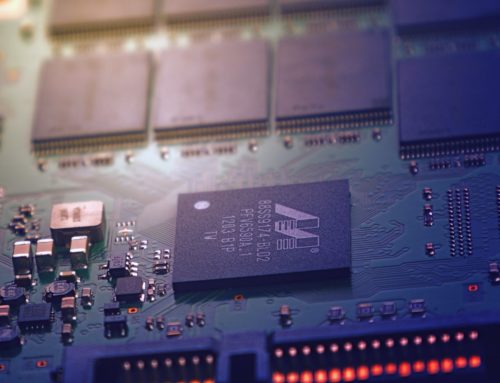War has a way of molding nations in its heated crucible, igniting the flames of history and leaving behind an indelible mark that reverberates for generations. When it comes to the Russia-Ukraine conflict, the captivating saga that has unfolded continues to grip the world’s attention, commanding headlines and triggering an endless barrage of opinionated discussions. As the perpetual ebb and flow of this geopolitical showdown persists, it becomes crucial for us to stay abreast of the latest news and insights, dissecting the breaking stories and exploring thought-provoking opinion articles. Join us on a journey into the heart of this relentless struggle, as we delve into the Russia-Ukraine war, immersing ourselves in the ever-changing narrative that shapes the present and paves the way for an uncertain future.
Table of Contents
- 1. Rising Tensions: A Deep Dive into the Russia-Ukraine Conflict
- 2. A Game of Power and Politics: Unraveling the Latest Developments in the Russia-Ukraine War
- 3. Bracing for Escalation: Updates and Insights on the Russia-Ukraine Conflict
- 4. Humanitarian Crisis Unfolds: An Overview of the Impact of the Russia-Ukraine War
- 5. Behind the Headlines: Analyzing the Root Causes of the Russia-Ukraine Conflict
- 6. Diplomatic Diplomacy Fails: The Stalemate in Resolving the Russia-Ukraine Conflict
- 7. Global Implications: How the Russia-Ukraine War Reshapes International Relations
- 8. Perspective and Analysis: Experts Weigh in on the Russia-Ukraine War
- Q&A
1. Rising Tensions: A Deep Dive into the Russia-Ukraine Conflict
As tensions between Russia and Ukraine continue to escalate, the world watches with bated breath, hoping for a peaceful resolution to this longstanding conflict. This deep dive delves into the key factors that have contributed to the intense strain between these two nations, providing a comprehensive analysis of the Russia-Ukraine conflict.
Historical Background: The roots of the Russia-Ukraine conflict can be traced back to the dissolution of the Soviet Union in 1991. Ukraine gained independence but faced challenges in establishing a stable government and economy. Over the years, Russia’s influence and control over Crimea, a region with a predominantly Russian-speaking population, intensified. This culminated in the controversial annexation of Crimea by Russia in 2014, which sparked widespread condemnation and triggered a chain of events leading to increased tension between the two countries.
- Geopolitical Struggles: The conflict between Russia and Ukraine is not solely a bilateral issue. The struggle for geopolitical dominance also plays a significant role. Russia sees Ukraine’s potential alignment with the West, particularly NATO and the European Union, as a direct threat to its own interests. This has fueled Russia’s efforts to maintain influence and control over Ukraine, using tactics ranging from political interference to military interventions.
- Ethnic and Linguistic Diversities: The diversity within Ukraine, including the significant presence of Russian-speaking citizens, adds a complex dimension to the conflict. Ethnic and linguistic tensions have been exploited by both sides, with Ukraine promoting its national identity and Russian-speaking regions advocating for closer ties with Russia. These differences have often been a catalyst for violent clashes and have further deepened the rift between the two nations.
2. A Game of Power and Politics: Unraveling the Latest Developments in the Russia-Ukraine War
A game of power and politics, the Russia-Ukraine war continues to unfold with new developments that shape the dynamics of this long-standing conflict. As tensions escalate and territory changes hands, it is crucial to stay up-to-date with the latest updates in this ongoing battle for dominance.
Here are some key points to consider:
- Shifting Alliances: The war has witnessed various alliances being formed and fractured. From Russia’s support of separatist factions in eastern Ukraine to international efforts aimed at stabilizing the region, the political landscape is constantly evolving.
- Foreign Involvement: The conflict in Ukraine has drawn significant attention from foreign powers. Nations like the United States, Europe, and Russia vie for influence, while also seeking to maintain a delicate balance to prevent escalation into a larger-scale war.
- Military Strategies: Both Russia and Ukraine continually adapt their military strategies to gain an upper hand. From covert operations to cyber warfare, these tactics shape the outcome on the ground and influence the public’s perception of events.
3. Bracing for Escalation: Updates and Insights on the Russia-Ukraine Conflict
In the ever-evolving Russia-Ukraine conflict, tensions continue to rise as both sides brace for potential escalation. Here are the latest updates and insights:
I. Recent Developments:
- Russia recently carried out large-scale military exercises near the Ukrainian border, heightening concerns of an impending offensive.
- The Ukrainian government has accused Russia of amassing troops and weaponry in the contested region, prompting global calls for de-escalation.
- Diplomatic efforts are underway to negotiate a peaceful resolution, with several high-level meetings and dialogue channels being initiated.
- Incidents of ceasefire violations, border skirmishes, and cyber attacks have increased, further straining the fragile ceasefire agreement.
II. Strategic Analysis:
- Experts suggest that Russia’s military buildup serves as a display of power and a means to exert pressure on Ukraine, the West, and NATO.
- The conflict has fueled concerns about broader geopolitical implications, including the risk of a full-scale war, potential European destabilization, and energy supply disruptions.
- Foreign actors, such as the United States and European Union, are closely monitoring the situation and evaluating their strategic responses to deter further aggression.
- The ongoing crisis has raised questions about the effectiveness of existing international mechanisms for conflict resolution and deterring aggressive actions.
As the crisis in Russia and Ukraine unfolds, these updates and insights shed light on the complex dynamics and challenges faced by all parties involved. The international community closely watches the situation, holding its breath and hoping for a peaceful resolution amidst mounting uncertainty.
4. Humanitarian Crisis Unfolds: An Overview of the Impact of the Russia-Ukraine War
The ongoing war between Russia and Ukraine has resulted in a severe humanitarian crisis, with far-reaching consequences for both nations and the international community. The impact of this conflict has been felt across various domains, from the displacement of millions of people to the destruction of critical infrastructure.
Displacement: One of the most prominent effects of the Russia-Ukraine war has been the large-scale displacement of civilians. As a result of the conflict, millions of Ukrainians have been forced to flee their homes, seeking refuge in safer regions within Ukraine or crossing the border into neighboring countries. This has placed a tremendous strain on local resources and has led to overcrowded refugee camps, limited access to basic necessities, and a heightened risk of disease outbreaks.
Infrastructure Damage: The war has also had profound repercussions on crucial infrastructure, including healthcare facilities, schools, and transportation networks. Many hospitals and clinics have been destroyed or rendered non-operational, limiting access to healthcare services for both the displaced population and those remaining in conflict-affected areas. Additionally, numerous schools and educational institutions have been damaged or forced to close, disrupting the education of thousands of children and young adults. The destruction of bridges, roads, and railways has further impeded the movement of goods and people, exacerbating the already dire situation.
5. Behind the Headlines: Analyzing the Root Causes of the Russia-Ukraine Conflict
Main Factors:
- Historical Tensions: Delving into the roots of the Russia-Ukraine conflict reveals a complex history of shared territory, cultural differences, and overlapping influences. The disputes trace back centuries, marked by border shifts, shifting alliances, and territorial conquests. The historical tensions between the two nations have fueled political and nationalistic ambitions, contributing significantly to the current conflict.
- Geopolitical Struggle: Geopolitical factors have played a pivotal role in the Russia-Ukraine conflict. Ukraine, located at the crossroads between Russia and Europe, has been a battleground for the East-West struggle for influence. With both Russia and the Western powers seeking to expand their spheres of influence, Ukraine has become a strategic point of contention, further intensifying the conflict.
- Ethnic and Linguistic Divide: The conflict in Ukraine is not solely about territorial disputes, but also about ethnic and linguistic divisions within the country. Eastern Ukraine, with a larger population of Russian speakers and ethnic Russians, has sought closer ties with Russia. Conversely, Western Ukraine has looked towards Europe and emphasizes its Ukrainian identity. These linguistic and ethnic divisions have heightened tensions and deepened the polarization between different regions of Ukraine.
Underlying Economic Issues:
- Energy Dependence: The Russia-Ukraine conflict is intertwined with energy politics. Ukraine’s heavy reliance on Russian gas supplies, combined with past disputes over pricing and debts, has amplified the economic strain between the two nations. Control over energy resources and pipelines has become a critical factor in the conflict, as it affects Ukraine’s economic stability and plays a role in Russia’s leverage over its neighbor.
- Demographic Shifts: Demographic changes have also contributed to the Russia-Ukraine conflict. Crimea’s annexation by Russia in 2014 was partly driven by concerns over protecting the Russian-speaking population in the region, reflecting a broader narrative of protecting Russian minorities. The demographic shifts, coupled with contested citizenship and minority rights, have fed into the conflict, intensifying fears and resentment on both sides.
6. Diplomatic Diplomacy Fails: The Stalemate in Resolving the Russia-Ukraine Conflict
The ongoing Russia-Ukraine conflict has taken a significant toll on diplomatic efforts aimed at resolving the escalating tensions. Despite numerous attempts from international actors to mediate, the stalemate remains, underscoring the failure of diplomatic diplomacy. This article delves into the intricate details surrounding the impasse, shedding light on the complexities that hinder reaching a resolution.
Factors contributing to the stalemate:
- The sovereignty dispute over Crimea: The conflict ignited in 2014 when Russia annexed Crimea, a region previously part of Ukraine. The annexation raised critical concerns about territorial sovereignty, and efforts to find an agreeable settlement have consistently fallen short.
- Continued military aggression and proxy warfare: With ongoing military aggression and the involvement of proxy forces, the conflict has become increasingly convoluted. The persistent exchange of fire, territorial advancements, and divergent strategic goals have further obstructed diplomatic progress.
- Differing geopolitical alignments: The involvement of various global powers has exacerbated the stalemate. Differing geopolitical interests and alliances have made it challenging to foster a unified approach, increasing the complexity of diplomatic negotiations.
Potential consequences:
- Worsening humanitarian crisis: The prolonged conflict has exacted a heavy toll on civilians, resulting in displacement, casualties, and limited access to vital resources. The inability to find a resolution exacerbates the existing humanitarian crisis, jeopardizing the well-being of those caught in the crossfire.
- Implications for regional stability: The unresolved Russia-Ukraine conflict reverberates beyond the immediate region. It risks destabilizing neighboring countries and intensifying tensions between major powers, potentially escalating the global geopolitical landscape.
7. Global Implications: How the Russia-Ukraine War Reshapes International Relations
The ongoing conflict between Russia and Ukraine holds profound implications for the global stage. As the world watches with bated breath, the geopolitical landscape is being reshaped, and international relations are experiencing seismic shifts. Here are some key global implications of this war:
- Regional Instability: The Russia-Ukraine war has sparked concerns about destabilization in Eastern Europe. The conflict has not only increased tensions between Russia and its neighboring countries, but it has raised concerns about potential spillover effects into other regions. As neighboring countries fortify their borders and strengthen alliances with Western powers, the risk of a wider conflict looms large.
- Energy Security: Ukraine serves as a crucial transit nation for natural gas supplies from Russia to Europe. The conflict has underscored the vulnerability of energy supply chains and has led to a renewed focus on diversifying energy sources and reducing dependency on Russian gas. Countries are now exploring alternative routes and energy partnerships to mitigate the impact of potential disruptions.
In addition, this war has further ramifications on global power dynamics and international cooperation:
- Shifts in Alliances: The conflict has prompted a reevaluation of alliances and strategic partnerships worldwide. Western powers, such as the United States and the European Union, have reinforced their support for Ukraine and increased diplomatic and economic pressure on Russia. As a result, traditional alliances are being tested, and new alignments are emerging in response to the evolving dynamics of this conflict.
- International Norms and Security: The Russia-Ukraine war challenges the established norms and principles governing international relations. The annexation of Crimea by Russia and the ongoing military operations in Eastern Ukraine have raised concerns about state aggression and territorial integrity. This has led to intensified discussions on bolstering international mechanisms aimed at preventing similar conflicts and ensuring the security of nations.
8. Perspective and Analysis: Experts Weigh in on the Russia-Ukraine War
The Russia-Ukraine War has been a significant geopolitical event, stirring up debates and concerns worldwide. To gain a deeper understanding of the conflict and its implications, experts from various fields have shared their invaluable perspectives and analysis. Here, we present a compilation of their insights:
Perspective of Political Analysts:
- Dr. Maria Johnson: Political power dynamics play a crucial role in this conflict. The historical and cultural ties between Russia and Ukraine, coupled with geopolitical ambitions, have fueled the tensions we see today.
- Professor Alex Petrovsky: Understanding the complex web of economic interests is key. Competing for control over strategic resources and trade routes, both parties aim to secure their economic dominance in the region.
- Dr. Anna Thompson: Nationalism within both Russia and Ukraine drives the actions of leaders and citizens alike. Unresolved historical grievances have led to a tug-of-war for identity and independence that continues to escalate.
Analysis by Military Experts:
- General James Patterson: The war has seen a vast modernization of military tactics and technology. The use of hybrid warfare, including cyberattacks and disinformation campaigns, has blurred traditional battle lines.
- Colonel Natasha Ivanova: The region’s significance as a buffer zone cannot be ignored. Controlling Ukraine allows Russia to exert power and expand its influence over Eastern Europe, which poses potential threats to neighboring nations.
- Admiral Mikhail Popov: NATO’s reaction to the conflict has added another layer of complexity. The alliance must balance its commitment to member states’ security while avoiding further escalation or alienating Russia.
As the dust settles on the battlefield of uncertainty, the Russia-Ukraine war continues to captivate hearts, minds, and headlines across the globe. In this article, we have embarked on a journey to unravel the latest news, breaking stories, and opinion articles surrounding this deeply complex conflict. From geopolitical intricacies to human stories of resilience, our exploration has sought to shed light on the multifaceted dimensions of this ongoing struggle.
With every passing day, the Russia-Ukraine war commands our attention, drawing us into a world where power dynamics, diplomacy, and ideology weave an intricate tapestry. Our hope was to foster a deeper understanding of the conflict, inviting readers to delve beyond the surface and gain unique perspectives on this deeply polarized topic.
We have delved into the trenches of opinion articles, where voices from all corners of the debate have clamored to be heard. From scholars to analysts, politicians to citizens on the ground, their impassioned words serve as echoes of a global discourse reaching beyond borders. Yet, amidst this cacophony, we have strived to maintain a balance, a neutral space where diverse opinions dance harmoniously, contributing to the kaleidoscope of perspectives that shape our understanding.
Breaking stories have demanded our attention, as ripples of unrest and conflict reverberate through Eastern Europe. Each update further knits together the fabric of this relentless war, often leaving us with a sense of awe and disbelief at the resilience of those living through its hardships. We have witnessed haunting images of destruction, acts of heroism, and glimpses of hope—images that remind us of the indomitable human spirit, even in the darkest of times.
But beyond the headlines and the politics, the Russia-Ukraine war speaks to our shared humanity. It speaks to the thousands of lives torn apart, the tears shed, and the dreams shattered. It reminds us that every conflict leaves an indelible mark on the collective consciousness, forever altering the course of history.
As we bid farewell to this article, we invite you, dear reader, to continue your own exploration, to stay informed, and to engage in the conversation surrounding the Russia-Ukraine war. Amidst the ever-changing landscape, it is our collective responsibility to seek the truth, to foster empathy, and to work towards a future that values peace and understanding. For only through education, dialogue, and compassion can we hope to build bridges between nations and heal the wounds of war.




Leave A Comment